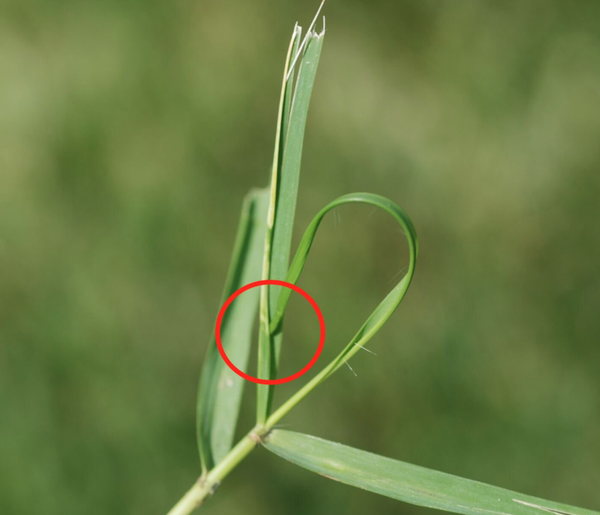Zoysiagrass Mites
en Español / em Português
El inglés es el idioma de control de esta página. En la medida en que haya algún conflicto entre la traducción al inglés y la traducción, el inglés prevalece.
Al hacer clic en el enlace de traducción se activa un servicio de traducción gratuito para convertir la página al español. Al igual que con cualquier traducción por Internet, la conversión no es sensible al contexto y puede que no traduzca el texto en su significado original. NC State Extension no garantiza la exactitud del texto traducido. Por favor, tenga en cuenta que algunas aplicaciones y/o servicios pueden no funcionar como se espera cuando se traducen.
Português
Inglês é o idioma de controle desta página. Na medida que haja algum conflito entre o texto original em Inglês e a tradução, o Inglês prevalece.
Ao clicar no link de tradução, um serviço gratuito de tradução será ativado para converter a página para o Português. Como em qualquer tradução pela internet, a conversão não é sensivel ao contexto e pode não ocorrer a tradução para o significado orginal. O serviço de Extensão da Carolina do Norte (NC State Extension) não garante a exatidão do texto traduzido. Por favor, observe que algumas funções ou serviços podem não funcionar como esperado após a tradução.
English
English is the controlling language of this page. To the extent there is any conflict between the English text and the translation, English controls.
Clicking on the translation link activates a free translation service to convert the page to Spanish. As with any Internet translation, the conversion is not context-sensitive and may not translate the text to its original meaning. NC State Extension does not guarantee the accuracy of the translated text. Please note that some applications and/or services may not function as expected when translated.
Collapse ▲Introduction
Zoysiagrass mites (Eriophyes zoysiae) are tiny, elongated (worm-like), white arachnids that are occasional pests of turfgrass. Very little information is available for zoysiagrass mites, particularly as pests in turfgrass, but some comparisons can be made with bermudagrass mites (Eriophyes cynodoniensis).
Pest Status
Susceptibility to mite attack will vary depending on turf variety. "Royal", "Emerald" and "El Toro" cultivars are somewhat resistant so damage should not be too severe. However, "Meyer" has shown to be highly susceptible (1).
Biology
Adult mites deposit eggs under the leaf sheath and can complete their entire life cycle within a week. Mites can produce a large number of offspring and can have many generations in a year so potential for rapid establishment and infestation is high.
Damage
Zoysiagrass mite damage is distinctive and can be easy to identify. Mite feeding causes the leaf to roll in on itself from one side (Fig. 1), protecting the mites underneath. As the leaf continues to roll, it can catch both older and newer growth, causing a large section of the plant to bend over creating an arch-like appearance. In larger plants, unrolling the leaf tissue will reveal yellow or white steaks from collar to tip. Damage is usually most severe in late spring/early summer.
Monitoring
It is almost impossible to observe zoysiagrass mites without the aid of a hand lens (2) so the best way to monitor for these pests is to look for plants exhibiting signs of damage - stunted growth with a rolled or "arched" apperance.
Control
Cultural Control
Making sure the turf is properly irrigated and applying lime and fertilizer applications according to soil test recommendations- be sure to get soil tested prior to making an application; excessive nitrogen levels are associated with increased mite damage.
Chemical Control
Chemical control options are generally not effective (5-10% control) and repeat applications are often necessary. Products containing abamectin or lambda-cyhalothrin have shown limited efficacy in insecticide trials with bermudagrass mites at Clemson University but only provide approximately 10% reduction of a mite population (3). If making an application, it is often recommended to combine with a fertilizer to improve appearance of the grass while reducing the mite population.
References
1. Bermudagrass and Zoysiagrass Mites. Oklahoma State Turfgrass Science Extension.
2. Zoysiagrass and Bermudagrass Mites. Kansas State University Research and Extension.
3. A Witch's Brew of Troubles with the Bermudagrass Mite. Clemson University.



